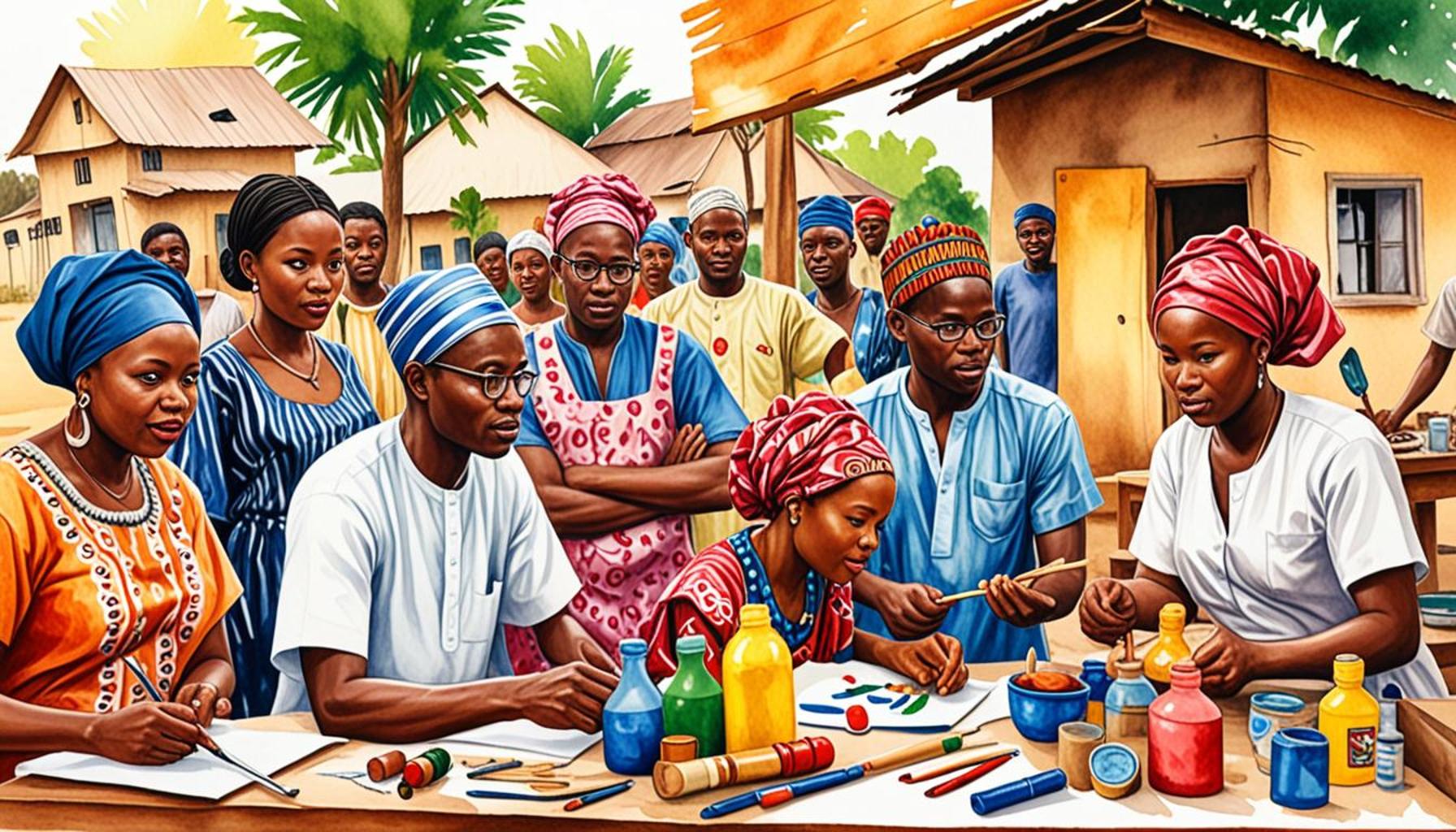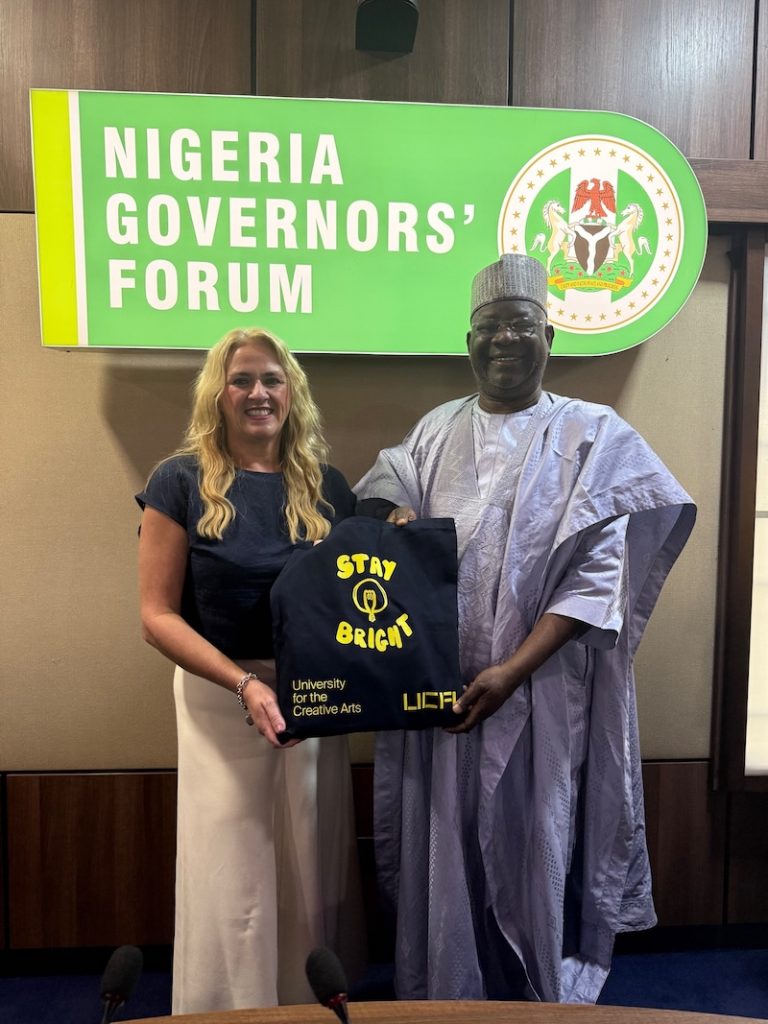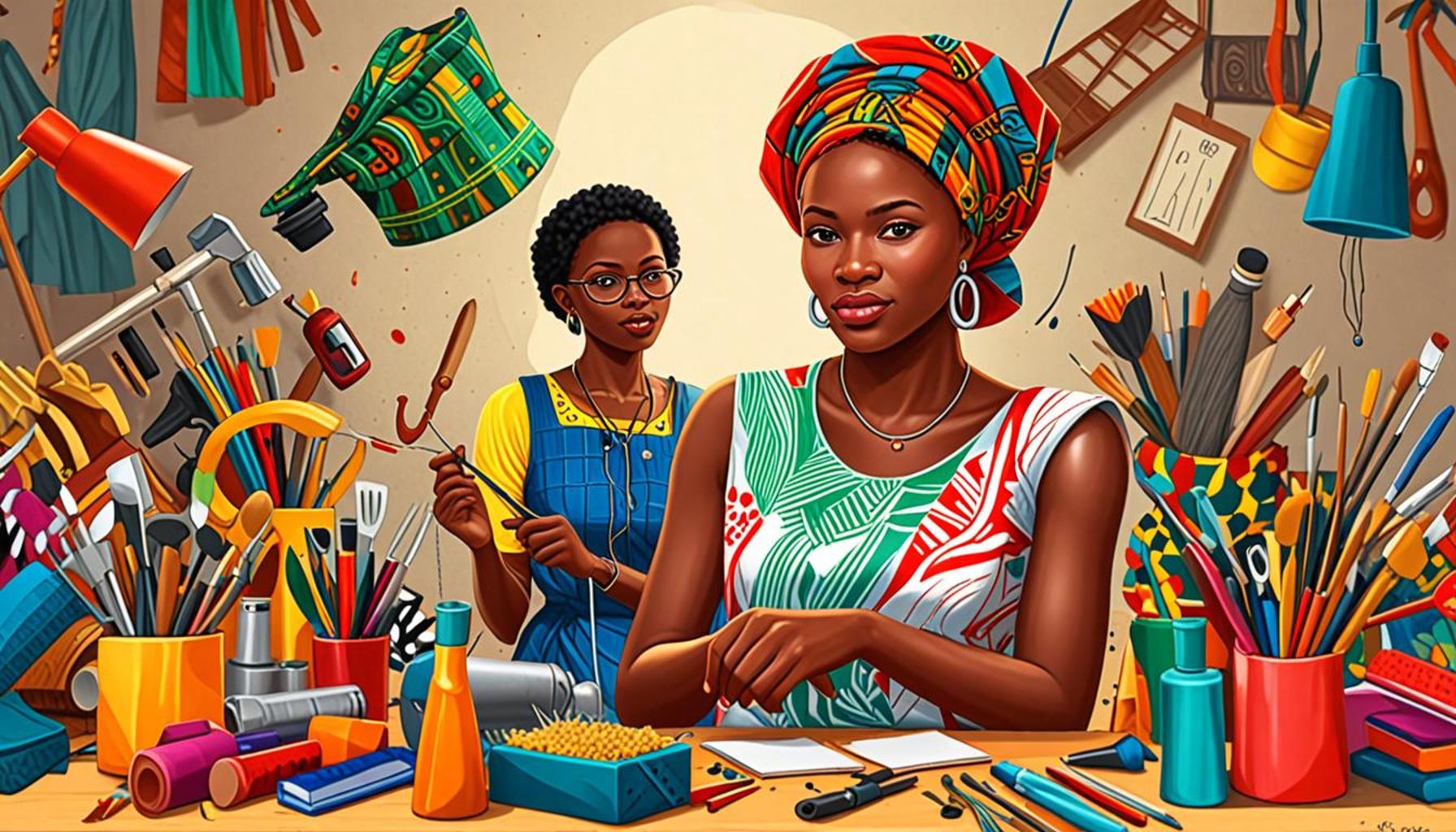The Role of Local Communities in Craft Innovation: Collaboration and Creativity in Nigeria

The Role of Local Craft Innovation in Nigeria
In the vibrant landscape of Nigeria, local communities are at the forefront of craft innovation. This dynamic is not just about producing goods; it embodies a profound collaboration and creativity that reflects the rich cultural tapestry of the nation. The artisans, often working from their homes or small workshops, infuse their unique backgrounds and experiences into their creations, ensuring that the tradition of craftsmanship is not only preserved but also evolves with the times.
One of the hallmarks of Nigerian craft innovation is collaboration. Artisans, designers, and community members frequently engage in partnerships that blend traditional techniques with modern ideas. For instance, in cities like Lagos and Kano, you can find groups of weavers and fashion designers coming together to create clothing that marries traditional patterns with contemporary cuts, making the garments desirable for both local and international markets.
This spirit of teamwork does not merely enhance the aesthetic value of the products but also fosters a sense of community. By pooling resources and skills, artisans can experiment and innovate, producing unique items that tell a story. Each piece becomes a story, infused with local heritage and contemporary aesthetics. A striking example is the work of artisans in the Benin Kingdom, whose bronze casting techniques are now being integrated into modern jewelry designs, appealing to a younger clientele keen on cultural identity.
Creativity forms the backbone of Nigeria’s craft scene. As artisans continue to push boundaries, they are not only preserving age-old traditions but also adapting them to meet current tastes. The result is a vibrant market of goods, from hand-painted pottery to intricately beaded bags, that are both functional and artistic. For instance, the use of intricate beads in traditional ceremonies is now complemented by their use in trendy fashion accessories, showcasing a seamless blend of old and new.
The economic impact of local crafts in Nigeria is significant. Not only do these crafts contribute to job creation, but they also promote skill development within the community. For instance, organizations like the African Heritage Research and Development Centre in Lagos provide training workshops for aspiring artisans, helping them refine their skills and build businesses. As a result, local crafts contribute to community empowerment, providing individuals with the means to support themselves and their families.

Furthermore, the materials used in these crafts are diverse and often locally sourced. Intricate beads, used in both traditional ceremonies and contemporary fashion, boast an array of colors and designs that reflect the cultural heritage of different Nigerian tribes. Additionally, handwoven textiles not only serve practical functions but also act as vibrant canvases that tell stories about the people and places in Nigeria. These textiles often feature geometric patterns and vivid colors, each representing a specific cultural narrative, making them sought after by both locals and tourists.
As we delve into the world of local craft innovation in Nigeria, the importance of supporting local artisans becomes increasingly clear. Their collaborative efforts and creative expressions are vital in shaping Nigeria’s cultural identity while simultaneously opening doors to new economic opportunities. By recognizing and fostering this synergy, we can help ensure that traditional crafts thrive amid modernity, allowing these beautiful expressions of culture to withstand the test of time.
YOU MAY ALSO LIKE: Read read another article
Collaboration: The Engine of Craft Innovation
The art of collaboration is deeply rooted in Nigeria’s local craft sectors, where artisans continuously find new ways to blend their skills, ideas, and resources. This cooperative spirit not only enhances the quality of products but also creates a sense of unity among community members. Small groups of artisans often come together, sharing knowledge and resources to solve problems and overcome challenges faced in their craft production. This collaboration can take many forms, from informal gatherings in local markets to structured workshops organized by community leaders.
Take, for example, the thriving scene in Jos, where local artisans specialize in the craft of wooden sculptures. Craftsmen and women collaborate to develop workshops that integrate artistic skills with business acumen, teaching each other how to prototype, market, and sell their creations effectively. Similarly, in the Eastern region, the Igbo culture celebrates its rich tradition of mask-making, where skilled artisans often invite neighboring craftspeople to participate in festivals. These events serve as platforms for showcasing innovative designs that cross traditional boundaries while encouraging cultural exchange.
Moreover, workshops that bring together artisans from various backgrounds help cultivate a diverse atmosphere where ideas flourish. They work together to create unique products that blend traditional techniques with modern aesthetics. For instance, artisans from the Yoruba community in southwestern Nigeria are now collaborating with graphic designers to create prints that honor their culture while appealing to contemporary fashion trends. Such partnerships yield innovative items, appealing not only locally but also to international markets keen on authentic craftsmanship.
The Role of Creativity in Craft Evolution
Creativity is the cornerstone of innovation in Nigeria’s local craft sectors. Artisans engage in a constant process of iteration and experimentation that expands the definition of their crafts. They are redefining traditional practices by integrating new materials, artistic inspirations, and modern techniques. This marriage of old and new establishes a unique identity for Nigerian crafts that resonates with younger generations.
To better understand this phenomenon, consider these key creative developments:
- Fusion of Techniques: Local artisans often meld different crafting techniques. For example, traditional beadwork is no longer limited to ceremonial wear but has entered the cosmopolitan fashion scene, with artisans crafting beaded accessories and clothing for urban youth.
- Use of Sustainable Materials: There is a growing trend towards sustainability, with artisans creating beautiful works from recycled materials while still honoring traditional craftsmanship. This not only showcases creativity but also addresses environmental concerns.
- Global Reach: Through online platforms, artisans can now promote their work to a global audience, allowing them to draw inspiration from international trends while keeping their cultural roots intact.
The interplay between collaboration and creativity in Nigeria’s local craft innovation is more than simple artistry; it symbolizes hope, resilience, and community empowerment. As these artisans continue to push the boundaries of their craft, they contribute significantly to the cultural richness and economic vitality of their communities. It reinforces the idea that the future of Nigerian crafts depends not only on the ingenuity of individual artisans but also on their ability to come together to create, innovate, and inspire.
The Role of Local Communities in Craft Innovation: Collaboration and Creativity in Nigeria
Local communities in Nigeria are not merely spectators in the craft innovation landscape; they are vibrant participants and key drivers of creativity. This dynamic role comes into play through collaborative efforts that harness traditional skills and modern market demands. By working together, artisans share techniques, resources, and innovative ideas, enhancing the overall quality of their crafts. This however extends beyond mere collaboration; it embodies a cultural renaissance where local identities are celebrated and preserved through craft.
For instance, groups of artisans might pool resources to purchase high-quality materials that they could not afford individually, ultimately leading to a more refined product. Furthermore, this collective approach can lead to the emergence of unique styles that reflect the community’s heritage while appealing to contemporary consumers. Crafts like traditional pottery, weaving, and beadwork are transformed through innovation, adapting to modern aesthetics.
Moreover, community involvement often extends to skill-sharing workshops where older artisans pass on their knowledge to younger generations. This not only ensures the survival of traditional crafts but also empowers the youth with entrepreneurial skills. By integrating cultural education with practical training, communities foster a sense of pride and ownership of their craft.
In essence, the synergy among local artisans cultivates an ecosystem of creativity, allowing them to thrive economically and socially. This collaborative spirit is essential for sustainability, ensuring that craft innovation in Nigeria is a community-centric endeavor that not only contributes to economic development but also enriches cultural heritage.
| Advantage | Details |
|---|---|
| Enhanced Quality of Crafts | Artisans collaborate to share resources and techniques, resulting in superior craft products. |
| Cultural Preservation | Collaborative workshops ensure that traditional techniques and knowledge are passed on to younger generations. |
The integration of these collaborative practices not only fosters innovation but also strengthens community bonds, making craft innovation a pivotal element of economic and social development in Nigeria. Exploring this theme further reveals a tapestry of stories where creativity and collaboration intertwine, ensuring that artisans not only survive but thrive in a competitive marketplace.
LEARN MORE: This related article may interest you
Nurturing Cultural Heritage through Craft Innovation
The intersection of tradition and innovation in Nigeria’s craft sectors plays a vital role in nurturing cultural heritage while meeting contemporary demands. Local communities are pivotal in ensuring that age-old practices evolve, bridging the gap between generations of artisans. This dynamic process is evident in various craft forms, from textile production to pottery, where artisans draw upon traditional methods while experimenting with new designs and technologies.
In the northern states, particularly in Kano, the beautiful craft of indigo dyeing has seen a remarkable resurgence. Artisans, who historically relied on traditional methods passed down through generations, are now incorporating modern dyeing techniques and sustainable practices. This collaboration has led to unique textiles that not only honor their cultural heritage but also appeal to modern fashion enthusiasts. The revival of these techniques underscores the importance of community knowledge-sharing as artisans adapt to current trends without losing their cultural identity.
Furthermore, the integration of technology into traditional crafts is a defining characteristic of contemporary Nigerian craft innovation. Local artisans are beginning to use digital tools to design and promote their works effectively. For instance, upholstery artisans in Lagos are employing computer-aided design (CAD) software to create intricate patterns for furniture that blend traditional motifs with modern functionality. This innovation has enabled them to attract a wider customer base and command higher prices for their unique, handcrafted pieces.
Empowering Young Artisans
The growth of local craft sectors in Nigeria significantly empowers younger generations, ensuring the transfer of skills and knowledge. Through mentorship programs and apprenticeship, seasoned artisans share their expertise with aspiring creatives. Such initiatives not only preserve traditional craftsmanship but also foster a sense of belonging and community among participants. In places like Abeokuta, where pottery remains a dominant craft, experienced potters work closely with novices to teach them skills such as molding and glazing, encouraging experimentation and personal expression.
This emphasis on youth engagement is particularly important in a society grappling with high unemployment rates. By equipping young artisans with marketable skills, local communities boost economic opportunities and support self-sufficiency. In response to this need, cooperative societies have emerged to help young artisans access resources, funding, and mentorship. By pooling knowledge and finances, these cooperative groups provide an essential platform for innovation, enabling participants to undertake collective projects that draw on their shared skills and aspirations.
Celebration of Craft through Festivals
Cultural festivals across Nigeria serve as vibrant showcases of local craftsmanship and creativity. Events such as the Osun-Osogbo Festival and the Yam Festival not only celebrate the rich traditions of specific communities but also provide a larger platform for artisans to demonstrate their work. These festivals often feature competitions, exhibitions, and workshops, enabling artisans to engage directly with a diverse audience, including potential buyers and cultural enthusiasts.
Through these celebrations, local artisans gain visibility, fostering connections across communities, which helps stimulate cross-pollination of ideas. As artisans share their stories, techniques, and creations, they inspire a new generation to embrace and innovate upon their cultural heritage. The artistic exchanges that occur at these events symbolize not only a celebration of Nigeria’s rich diversity but also ignite a spark of creativity among participants, reinforcing local crafts’ relevance in both regional and global contexts.
The active role of local communities in craft innovation fosters a rich tapestry of collaborations and creative expressions vital to the preservation and evolution of Nigeria’s cultural landscape. As these artisans navigate the complexities of modern markets, their ingenuity, resilience, and community-driven ethos ensure that Nigerian craftsmanship remains vibrant and impactful.
ADDITIONAL INSIGHTS: Expand your understanding here
Conclusion: The Power of Community in Craft Innovation
The synergy between local communities and artisans in Nigeria is the lifeblood of craft innovation, acting as a catalyst for both cultural preservation and economic development. As we have explored, the dynamic interactions among artisans not only facilitate the transfer of skills and knowledge but also foster an environment ripe for collaboration and creativity. Through vibrant cultural festivals and engaged mentorship programs, younger artisans are empowered to innovate while staying rooted in their rich heritage, signaling a bright future for traditional crafts.
The revolution brought about by integrating technology and modern trends into indigenous crafts is a testament to the adaptive spirit of Nigerian artisans. Community-driven initiatives have initiated a ripple effect, enhancing market visibility and accessibility for these unique art forms. The elevation of crafts such as indigo dyeing in Kano and intricate upholstery in Lagos showcases the potential that lies in merging the old with the new.
Moreover, as communities engage in shared practice through cooperative societies, they harness the collective strength necessary to tackle economic challenges and revitalize industries. This grassroots approach not only enriches the local economy but also affirms the role of crafts as a medium of cultural expression and identity. As more individuals and organisations recognise the significance of fostering local craftsmanship, the wealth of untapped potential will continue to flourish.
Ultimately, the role of local communities in craft innovation goes beyond mere preservation; it is a celebration of resilience, creativity, and cultural richness. By championing artisanship and encouraging collaboration, Nigeria stands poised to assert itself on both the regional and global creative stage, ensuring that its crafts are not only seen but genuinely appreciated for the stories they tell and the identities they represent. In this vibrant tapestry lies the promise of Nigeria’s enduring legacy and creative future.


